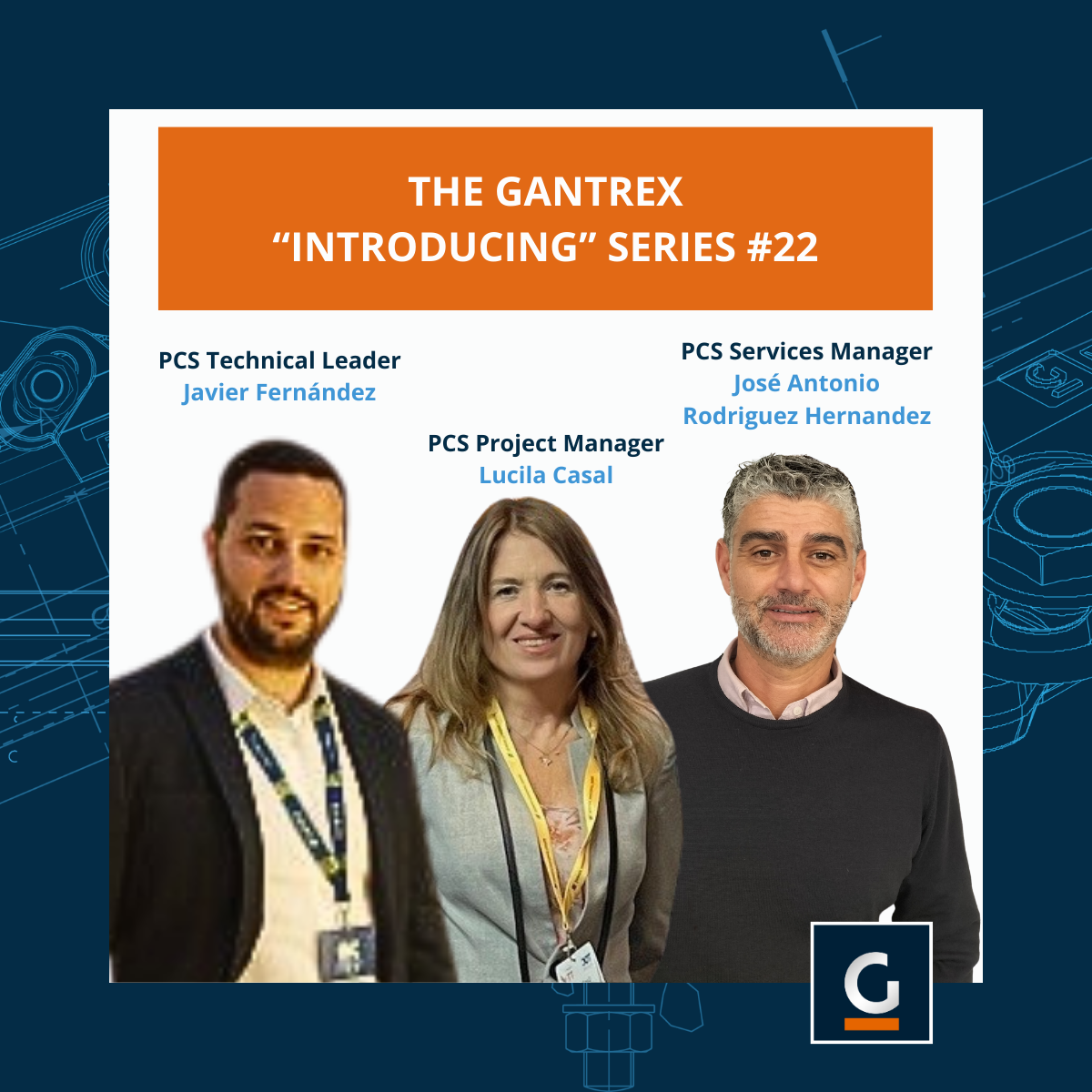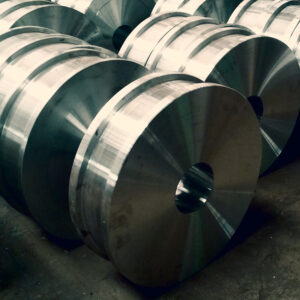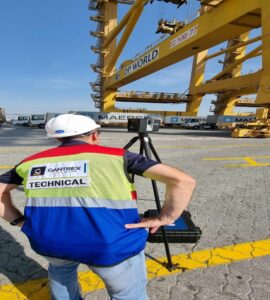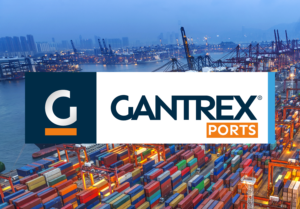THE GANTREX "INTRODUCING" SERIES #22
It’s now just over 2 years since Gantrex launched Port Crane Solutions (PCS), a dedicated portfolio delivering expertise across Crane Diagnostics, Crane Parts, and Crane Services. So, we took a moment to catch up with colleagues from the team to hear their thoughts on how they feel the solutions portfolio is making a real difference to customers worldwide. Here we meet PCS Technical Lead Javier Fernández, PCS Project Manager Lucila Casal and PCS Service Manager Jose Antonio Rodriguez Hernandez, all based out of our Madrid office, but each with an interesting viewpoint to share.

Your team is becoming fast recognized as the experts to turn to for crane management solutions. What’s your area of expertise in this field?
Lucila: I am a qualified electrical engineer, and started my career in the port machinery sector in 1998, in a company dedicated to the design, fabrication and supply of diesel generators for RTG´s. I then went on to spend 17 years at the crane manufacturer Paceco Spain (Mitsui E&S group (Japan)), both in the electrical department and laterally as part of the Innovation team. In 2018 I started at KALMAR, working as Project Manager, and specializing in STS heightening & boom extension projects as well as electrical retrofit. So, I have extensive specialist experience within the crane sector which I bring to my role now as Project Manager for the division.
Javier: I have a degree in mechanical engineering with a specialism in machines and structural calculations. I also have a master’s degree in industrial engineering and automotive project management certification too. In addition to my qualifications, I have a decade of industry experience having worked 4 years as mechanical engineer in the crane and oil and gas sector, with a further 6 years as technical project manager in the automotive and railway sectors. These roles have built my expertise in design, calculation, product development and quality control, international and multidisciplinary project coordination.
Jose: I followed in my father’s footstep and studied mechanical industrial engineering, My first job was in an earthmoving machinery workshop where I worked with bulldozers, excavators, and dumpers. Following this I moved into the railway sector and then in 2010, went to work for a maintenance company at Valencia Port. During my career I have worked on a wide range of cranes throughout the world and have gained a wealth of experience in the specific conditions and constraints that crane systems face as a result.
What things are crucial when it comes to designing technical solutions for a specific project or application?
Lucila: It may sound obvious, but it is essential that we have knowledge of the application. We are coming up with solutions for a particular crane in a very specific situation and for our work to have maximum impact, we must understand how the mechanical design needs to interact with the electrical design, to provide optimum system performance. And this can include a range of factors such as reduction in breakdowns, fewer operational stops, along with operator comfort and safety.
Javier: They must include considerations across several factors. First, you think about maintenance and serviceability. The system should be designed for easy maintenance access and servicing, with features like accessible inspection points and predictive maintenance technologies to minimize downtime and extend equipment lifespan. Quality is a key component of any successful system solution. In implementing robust quality assurance processes throughout the project execution, including regular inspections, testing, and documentation, we can ensure that the crane system meets specified requirements and adheres to quality standards.
There are also environmental factors that need to be considered, mainly wind speed, temperature variations and corrosive elements, to ensure the crane’s durability and performance under a range of conditions. And then we come to safety. Essential at every stage of a program, we incorporate comprehensive safety features during our wok on a project, and the continuing safety of the crane beyond our involvement.
And what are your thoughts on diagnostic tools? What part do they play in the successful outcome for a customer?
Javier: Diagnostics and digital technologies allow us to perform non-invasive assessment of crane systems, allowing us to investigate cause with minimal impact on operations. The level of data that we can access, and the technology we can employ to remote access operations provides a level of information, accuracy and real-time analysis that ultimately leads to a more robust and cost-efficient solution for the customer.
Lucila: For me, these tools are key. And not just for coming up with solutions to an issue that has arisen. The right diagnostic tools can help us advise of possible issues before they arise. The CMS – Crane Management System – is a good example of this. With the CMS we can see when a problem has occurred, but it also provides alerts ahead of possible breakdowns and wear issues of critical components. Having the foresight to deal with issues before they arise is invaluable to our customers, minimizing down time and reducing the production and financial impacts that can come as a result.
How do you prioritize tasks and ensure that project milestones are met?
Jose: This is a collaborative process that we undertake with our customers for every project. Key milestones and associated resource requirements are worked through together to ensure that we comply with the overall planning program.
Lucila: As soon as the project becomes alive, we have a kick-off meeting where key tasks and objectives are set out and established within each area, including engineering, procurement, logistics, operations, and finance. Once a project is underway, we put in place a schedule of monitoring meetings, which allow us to keep status checks in place, manage the budget, and ensure that activities are running in line with the schedule.
Javier: There are several tools that we use to maintain a consistent and quality program, an example being the use of an Eisenhower Matrix to support our decision-making and prioritize urgent and critical tasks. With long-term projects, we also know how important it is to identify critical paths for project performance and forecast areas where performance could be affected.
It’s clear that there is an incredible amount of experience and expertise across the teams. Is there a project where you feel this expertise was particularly called upon?
Lucila: We were selected to develop a modular electric control for yard cranes. The project saw us working with different crane control manufacturers and running test programs between our simulation in Spain and on the machine (RTGs). We brought together a team of young engineers, with expertise in PLC and drives. We worked with them to look at the operations of a crane and, by bringing together our collective expertise, we were able to reduce the commissioning time by almost 50% with minimal interruption to operations.
Jose: Just last year we worked on a project in Portugal, which I think really showcased the range of technical insight that we use to support our customers. The project was particularly unique and complex, as it required four cranes to be built in a row. Not only were the timescales tight, but each crane required different types of rails and work platforms. We worked well as a team to find the best solution and I am delighted to say the project was delivered on time.
Teamwork seems to be key to project success. How do you encourage collaboration?
Lucila: I find that establishing dedicated work teams leads to a great result, with each team having responsibility and ownership of a specific aspect of the project, with appropriate oversight from me.
Javier: There are a couple of rules that I follow that work well. Firstly, make sure that there is always clear communication. Secondly, build ownership and accountability amongst the team by having shared goals and a clear vision. And, finally, make sure that everyone understands the inputs and opinions from different regions and departments within Gantrex, so cross-functional collaboration is essential.
Jose: The team is everything to me, and with a strong team we can deliver the very best service for our customers. So, I make sure that I am visible on site, I check the conditions, I want to know what I can do to assist, to ensure that they have everything they need to perform their tasks on time and to the very highest quality standards.
Ours is an industry which is heavily regulated and where knowledge exchange is key. How do you stay ahead of the curve when it comes to major trends and developments?
Jose: We are very fortunate that we have access to a global resource of knowledge and information with highly trained and experienced professionals in every department. Looking externally, we have a network of collaborators who advise us in a wide range of areas, including but not limited to safety, insurance, legislation, labor relations, tax, and such.
Javier: We also stay in close contact with our own professional networks and participate in different events and technical committees within the port cranes sector.
Lucila: And on a more personal level, we each regularly review trade publications and belong to specialist groups on LinkedIn such as ICHCA, World Cargo news, and others.
Is there anything on the horizon that you find particularly interesting or worthy of note?
Lucila: Yes, I am really interested to see how automation will continue to advance our sector. It’s already established and making significant strides. In an industry where we deal with very heavy machines, with large inertia, which must be controlled in a safe way, in real-time, in an area full of telecommunications interference… well, it’s no easy task. The advancements that automation will deliver will be incredibly exciting to bring on board.
Javier: There’s also other tech developments that are ones to watch, such as image recognition, machine learning and AI. These are already proving themselves to be game changers in major industries, and I am excited to see how these will impact the way that we work and the scale and scope of solutions that we will be able to deliver.
Jose: In my opinion, there’s no doubt that the future leads us to electrification and automation, two emerging capabilities and approaches that we know will work within our sector.
What next for the Gantrex PCS portfolio?
Lucila: I think there are so many opportunities for us. I guess the obvious one is that of new technologies, increased efficiency, and advanced diagnostics.
Javier: We’re in such a strong position and I believe that we will become the global leader in this specialist field. We are continually improving and advancing our PCS portfolio and strengthening our commitment to our customers, providing what they need, wherever in the world they need us.
Jose: Absolutely! This is such an exciting time for us. Globalization is driving activity in the logistics and maritime transportation area, and, as a result, organisations will need a global solution. We are just at the beginning of our journey, and we know we have an outstanding offer that can grow alongside the sector.
And as a final point, what are you most looking forward to as the division continues to grow and develop?
Javier: For me it’s got to be the potential we have to leverage our R&D capabilities to keep on developing advanced solutions, products, and diagnostics for port cranes. In doing this, we’ll be able to identify root causes of problems more accurately, bringing an ever-increasing level of efficiency, reliability, performance, and customer satisfaction.
Lucila: I agree. And I also think we have an incredible opportunity to help shape the industry, by sharing our knowledge with others to drive continuous improvement and innovation. We have an exciting opportunity to take hold of this sector and, through collaboration and investment, set a new standard for service and performance.






